Road bike wheels buyer's guide (videos)
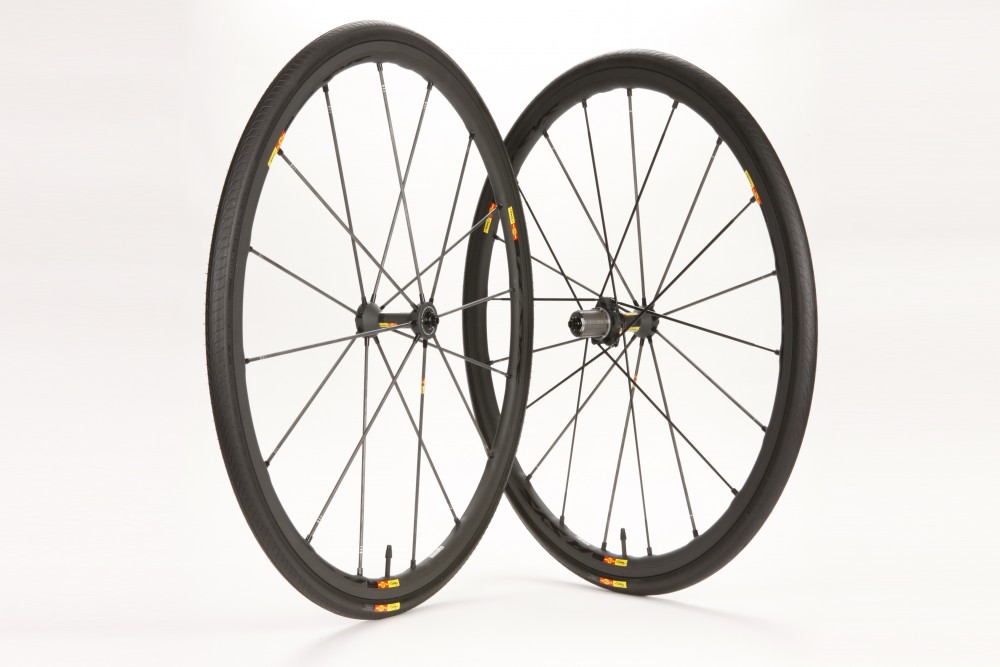
In this road bike wheels buyer's guide we look at the different options available, and guide riders through the best choice for them. The perfect wheel would be aerodynamic, stiff and light. Superior aerodynamics will enable you to go faster withless effort. A stiff wheel will not flex under load and means that all the energy you are putting through the drive train is being used to propel you forwards and not lost through bending the wheel.
>>> Buyer's guide to road bike tyres
If a wheel is not very stiff it will feel spongy when accelerating hard out of the saddle or sprinting and in some cases it may rub on the brake blocks. A lighter wheel is useful for climbing as it improves your power to weight ratio, but it should also be noted that lighter wheels accelerate faster too, which is very useful in racing where you are sprinting out of corners, or if you want to attack on a hill.
>>>Travel off road? Check out this guide to mountain bike wheels
Anatomy of a wheel
The first thing to understand is the different parts that make up a bike wheel and how they affect the performance.
Rims
The rims are usually the first thing you notice on a pair of wheels. Deeper section wheels are more aerodynamic, but are heavier than their shallow rim counterparts. In addition, crosswinds can catch the deeper section like a sail, which can make keeping the bike in a straight line a handful. A lower profile is much easier to control and is often lighter in weight.
>>> Disc brakes on road bikes: are they necessary?

These Fulcrum Racing 5 wheels are a standard aluminium box rim
Of all the parts of a wheel, it is most important for the rim to be lightweight. This is because of moments. People often talk about 'rotating weight' being important and they are right, but the rim has a greater moment than the hub as it is further away from the central axis. Think of it in terms of a lever or seesaw.
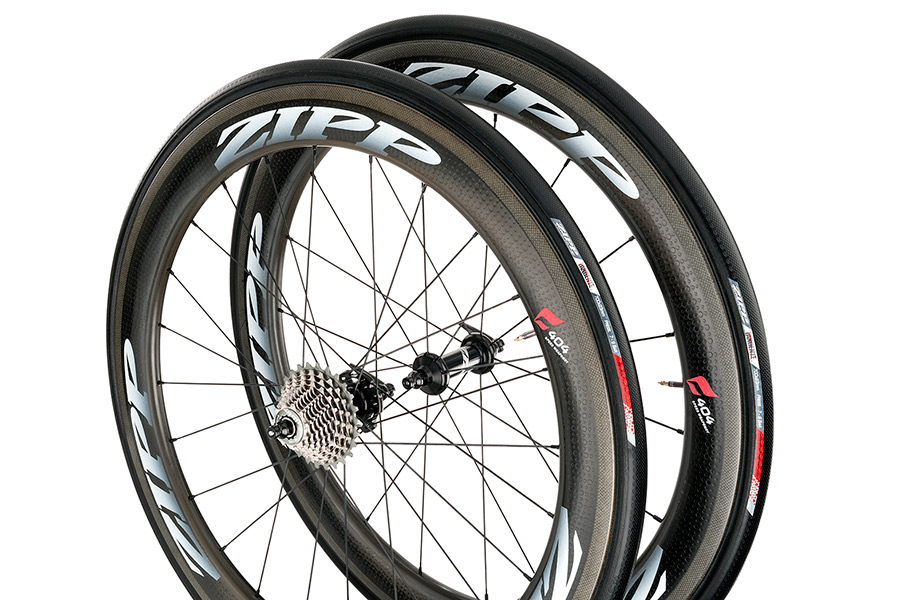
Zipp 404 Firestrike wheel set are 60mm deep section
Once a wheel is up to speed on the flat, a lighter rim is less important as its own inertia will help keep it spinning, but for accelerating, particularly uphill, a light rim is best. With regards to materials carbon rims are generally lighter and more expensive than aluminium.
Braking surface
Disc brake specific wheels don't feature a braking surface on the rim. On other wheels, the braking surface will either be aluminium or carbon. It is easier to manufacture a perfectly flat braking surface with aluminium, resulting in more consistent braking. In addition, aluminium can be machined to feature grooves and patterns to improve the efficiency of the braking.
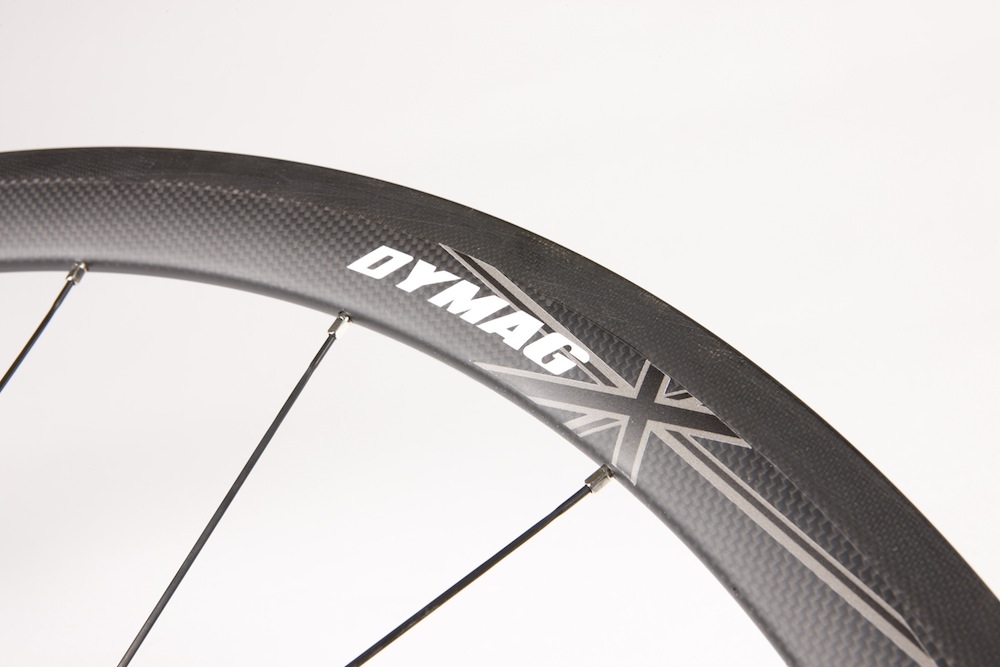
A carbon braking surface
An excellent example of this is the Mavic Elixiath brake rim. Carbon can work well, but braking performance is considerably diminished in the wet. Carbon braking surfaces can also suffer from heat build up if you drag the brakes for a considerable amount of time. This can cause de-lamination of the braking surface and potentially wheel failure.
>>> A complete buyer's guide to road bike groupsets
Hubs
Hubs are at the centre of the wheel and contain the axle and bearings. Higher quality hubs are better made, often with superior bearings. In free wheel bicycles, the rear hub is a free hub. This means you can freewheel without turning the pedals. The cassette is fitted onto the freehub body.
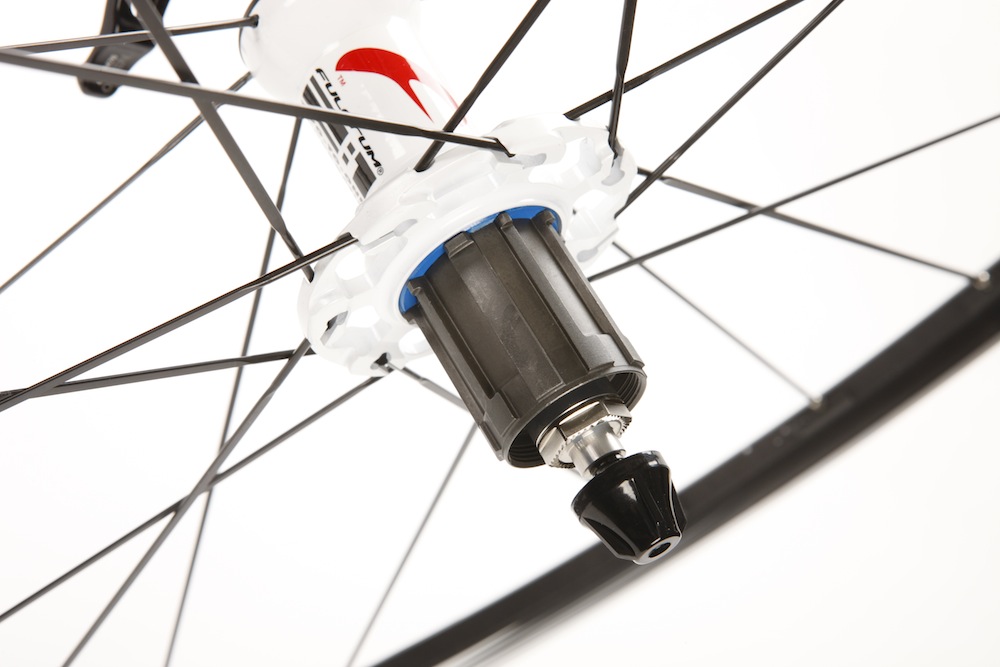
A Sram/Shimano free hub body.
Whether awheel set is Shimano or Campagnolo compatible depends upon the free hub body, as the cassettes from the two manufacturers are a slightly different design in the way they slot onto the free hub. This isn't a problem as different free hub bodies can be purchased and changed on the wheel. Note Shimano and SRAM are compatable with each other.In addition, Edco now make a free hub body that is Shimano/SRAM and Campagnolo compatible.
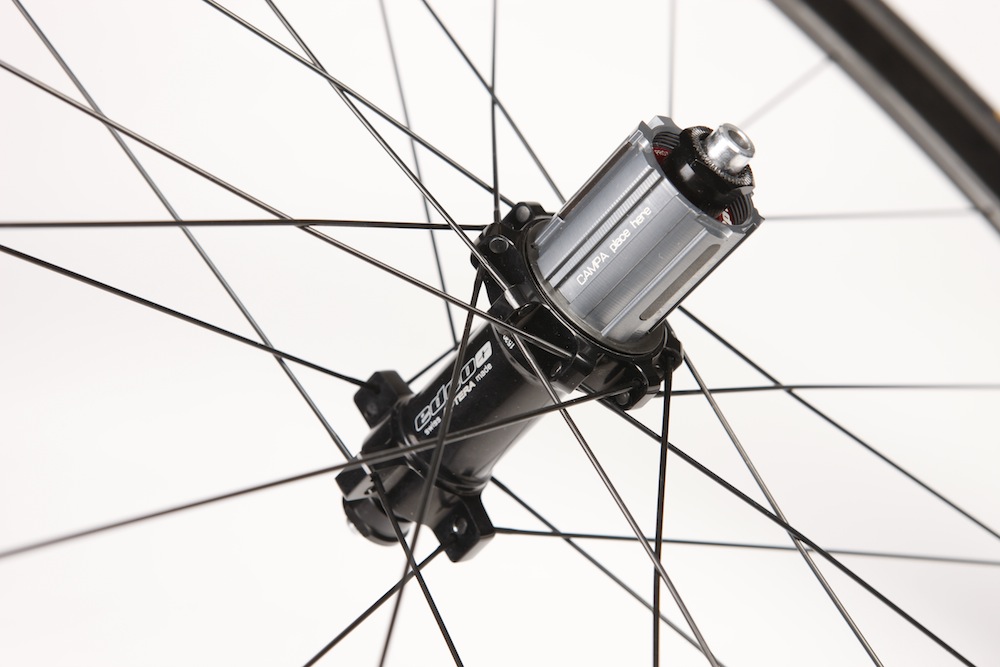
This new Edco Hub is Shimano and Campag compatible
10 or 11 speed?
The majority of new wheels now feature a free hub body designed for 11 speed cassettes. Use of a 10 speed cassette is possible by placing a single spacer on the free hub before the cassette. These spacers are often included with the wheels, but if you are unsure, check with your local bike shop.
Bearings
The hubs contain bearingswhichenable the hub to rotate on the axle. More expensive wheels will often feature superior bearings, which roll more smoothly with less friction. Hubs feature either cartridge bearings or cup and cone, with the latter oftenfound in Shimano wheels.

Cartridge bearings are increasingly popular owing to simple installation, replacement and maintenance. Cup and cone bearings can work just as well, but require careful adjustment.The most expensive and most smooth bearings are often ceramic.
Spokes
The spokes provide support from the hub to the rim and distribute the pressure around the bike wheel, working in both tension and compression. It is important to pay attention to the spoke count and lacing pattern (the way the spokes are arranged) as this can affect the wheel's strength and stiffness. A higher spoke count generally translates into a stronger, but slightly heavier, wheel.
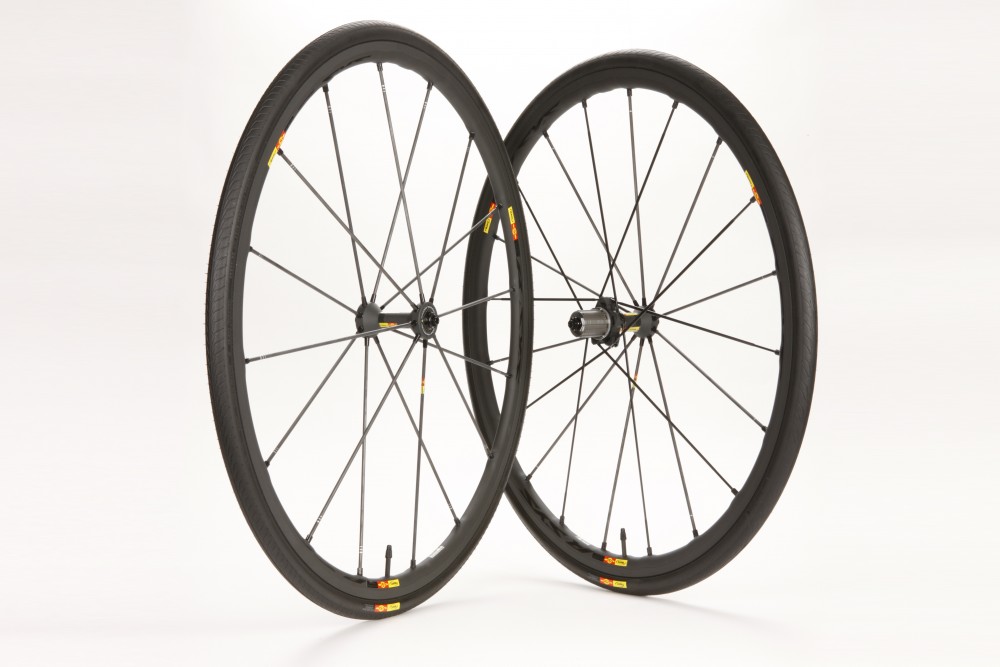
A lower spoke count can be more aerodynamic, but the spoke shape can also play a part, with spokes available in different profiles. Traditionally spokes were round in cross section, but flat/aero/bladed spokes are quickly becoming standard atall price points.
Nipples
The nipples hold the spoke in place on the rim and are typically made of brass for its tensile strength. Aluminium alloys can also be used to save weight. Spokes are typically laced into the hub and tensioned at the nipple on the rim. When a wheel is trued (straightened) it is the spoke tension at the nipple which is adjusted.
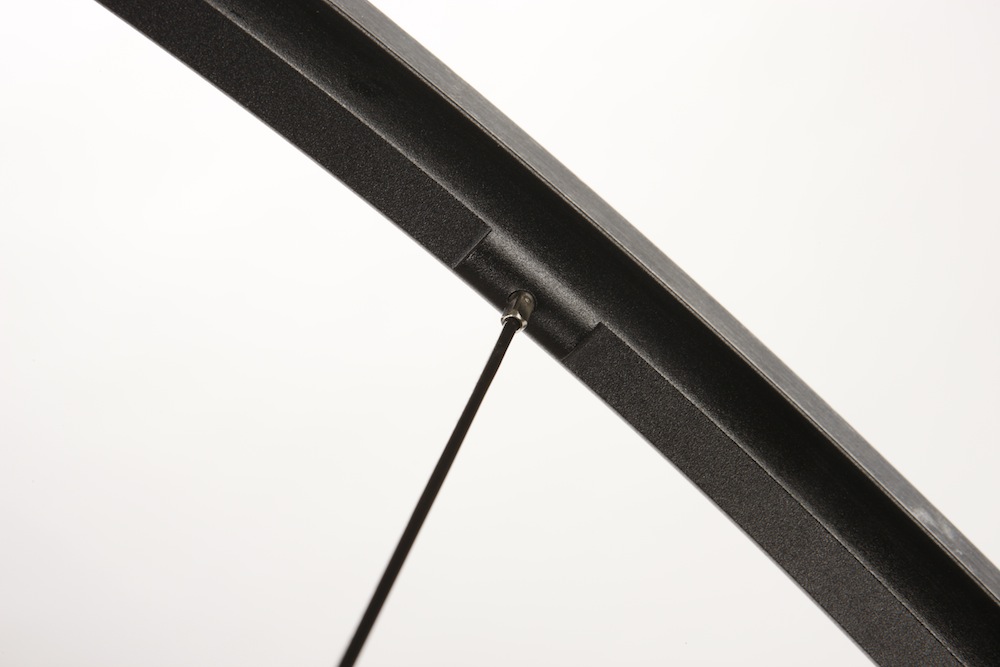
The nipple and bladed spoke on a Fulcrum wheel
Our pick of road bike wheels

Revolver Kronostok 350 wheels
The Revolver Kronostook 350 wheels offer a huge range of build options and a very comfortable ride over rough roads
£849.99
Score

Mavic R-Sys SLR wheels
£1450
Score

American Classic Road Tubeless wheels
£859
Score

Fulcrum Racing Zero Carbon
Range-topping Fulcrum Racing Zero Carbon wheels mix carbon rims and aluminium spokes to create a brilliant blend of speed and
£1799
Score

Rolf Prima Ares4 ES wheels
£1499
Score
Clincher wheels
Your bike probablycame complete with clincher wheels and this is for good reason. Clinchers are the most common type of bike wheel currently available and are defined by the type of tyre they use. Clinchers utilise an open cross section tyre with a bead that holds it in place on the rim profile. An inner tube is placed inside the rim. This offers a great deal of convenience as it is easy to repair whenyou get punctures.
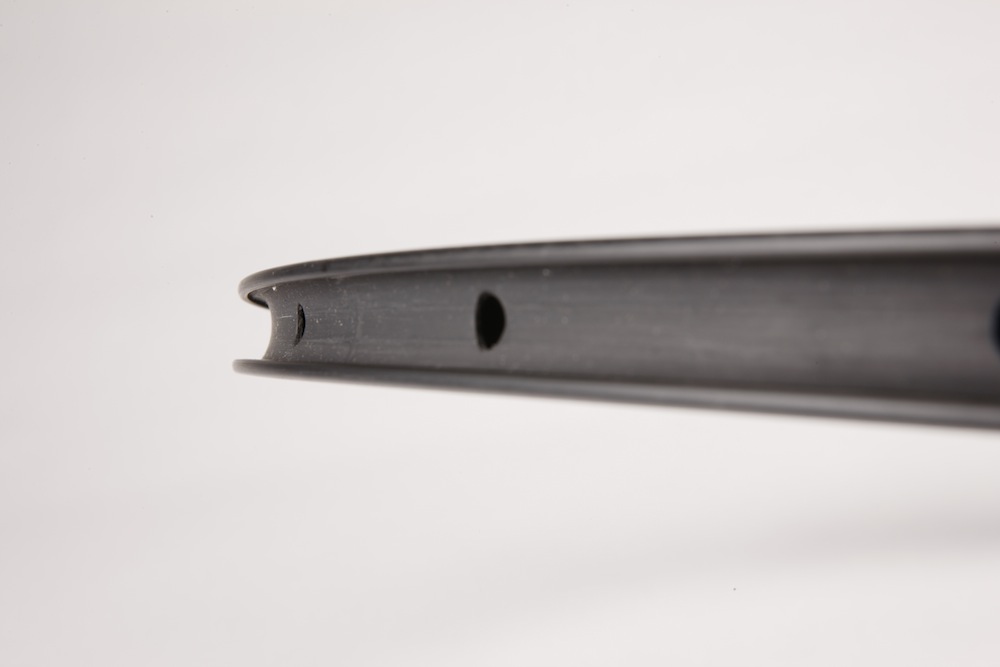
A carbon clincher rim. Note the lip to hold the tyre bead in place.
Carbon clincher wheels are significantly heavier than their equivalent tubulars because the rim needs to be stronger to cope with the demands of braking pressure and force from the rim. Some deep section wheels, such as the Mavic Cosmic SLS feature a carbon fairing placed over an aluminium rim. These are heavier, but are cheaper than a completely carbon rim, owing to lower cost manufacturing.
Advantages:
- Easy to repair punctures, just by carrying spare innertubes
- Easy to change tyres, can be done in minutes
- Clincher tyres are typically cheaper than tubulars
Disadvantages:
- Typically heavier than a tubular rim
- Higher rotational weight than a tubular
- Braking surface encounters higher stress, having to withstand outward pressure of the bead and inward pressure of heat from the brakes
Tubular wheels
Once upon a time,prior to the invention of clincher tyres, tubular wheels were the only option available. Today their main application is for use in racing. This is because tubular tyres are an enclosed tyre, with an inner tube sealed or sewn inside making them less convenient if you have to change a tyre than a clincher.
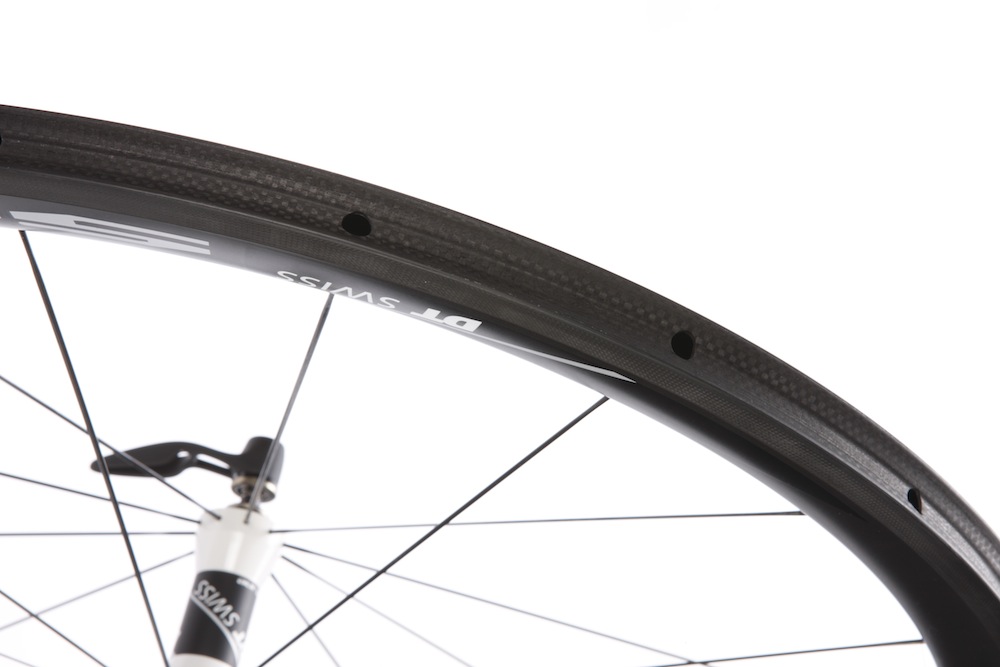
A DT-Swiss Spline 38 Tubular rim
Tubular wheels are usually lighter than the clincher alternative. This is because the rim does not need to be as strong in order to hold the bead of the tyre. Instead, the tubular tyre is glued or taped onto the rim.
Bonding of the tyre to the rim is crucial, in order to avoid rolling the tyre off the rim while cornering. Gluing is most traditional way and considered the most reliable, but it typically takes a couple of days to set, where as a tape can be quicker.
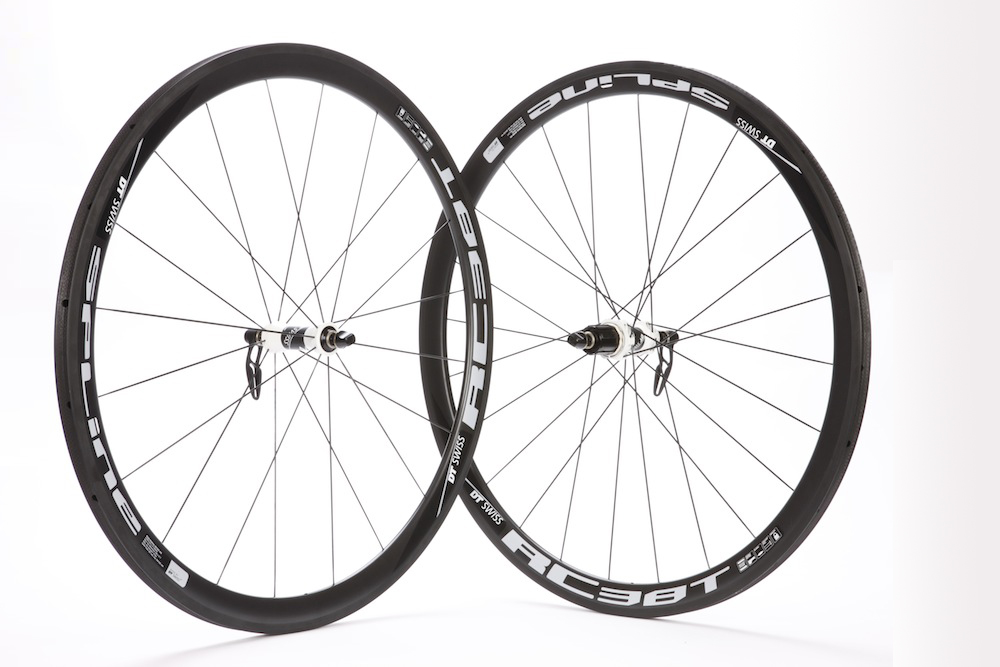
DT-Swiss Spline 38mm tubulars. A good all round mid section wheel
If you are racing, riding a sportive, or training on a tubular tyre (tub for short) and you get a puncture there are a couple of options. Sealant such as Vittoria pit stop can be injected into the tyre to seal the hole, but this may not work if the hole is too big.
Alternatively a spare tub can be placed on the rim, but this will not be bonded as strongly to the rim. If you are racing, or riding with a support vehicle, tubulars can be a joy to ride, but for training rides and everyday use, even professionals use clinchers.In summary:-
Advantages
- Lighter wheels
- Lighter rim in particualr is better for acceleration
- Tubular tyres roll very nicely
Disadvantages
- Less easy to fit than clinchers
- Repairing a puncture not as straight forward as a clincher
Tubeless
Tubeless wheels are growing in popularity with many clincher wheel sets now being compatible with both tubeless and tradition clincher/inner tube set ups. The wheels involve a tyre seated in the rim, like a clincher, but with an airtight seal. Instead of an inner tube, the tyre is filled with air and sealant.
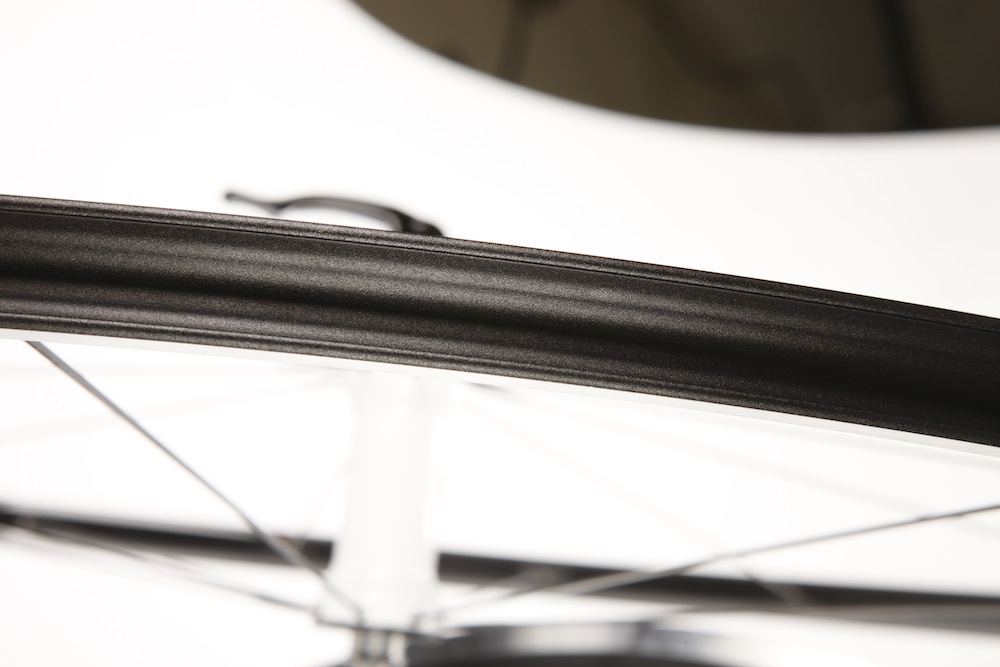
A tubeless ready rim. Note there are no spoke holes
A consequence of making the rim airtight can be that it is slightly heavier, but this is somewhat offset by the lack of inner tube. The sealant is designed to seal holes and punctures as they happen. It is still possible to get a flat on a tubeless wheel, at which point an inner tube can be placed inside, but the risk is considerably less, making them ideal for those wanting to avoid punctures.
Advantages
- Much lower risk offlat tyres
- Low rolling resistance
Disadvantages
- A fiddle to set up
- More weight at the rim
Disc brake specific wheels
Disc brake road bikes are coming whether you like it or not. Disc brake specific wheels feature a different hub design, so that the disc can be accommodated and the axle design can be different. The bike industry has not yet agreed on a standard, with disc brake wheels currently featuring either through-axles and quick release skewers.
>>> Review: Bianchi Infinito Disc
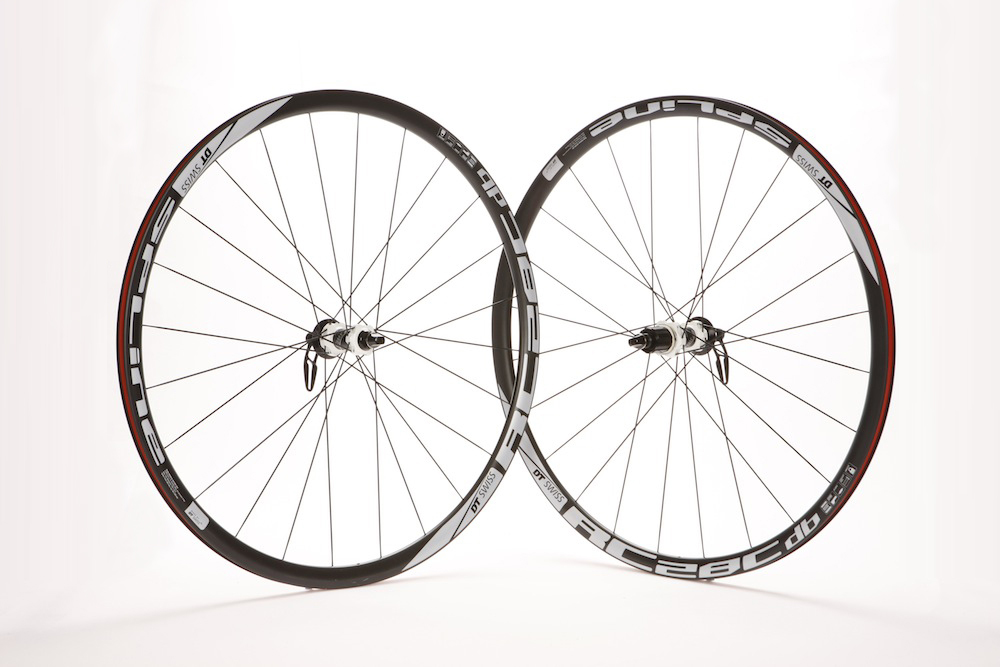
Disc specific wheels, with no braking surface
Without the need for a braking surface, disc brake wheels can be lighter at the rim, a potential big advantage. They can be tubeless, clincher, or tubular in their profile.
Advantages
- Lighter rim possible
- No heat build up in the rim, so no risk of de-lamitation
Disadvantages
- No industry standard yet on axle design
- At present there is limited choice
- Less aerodynamic than a calliper wheel
Track Wheels
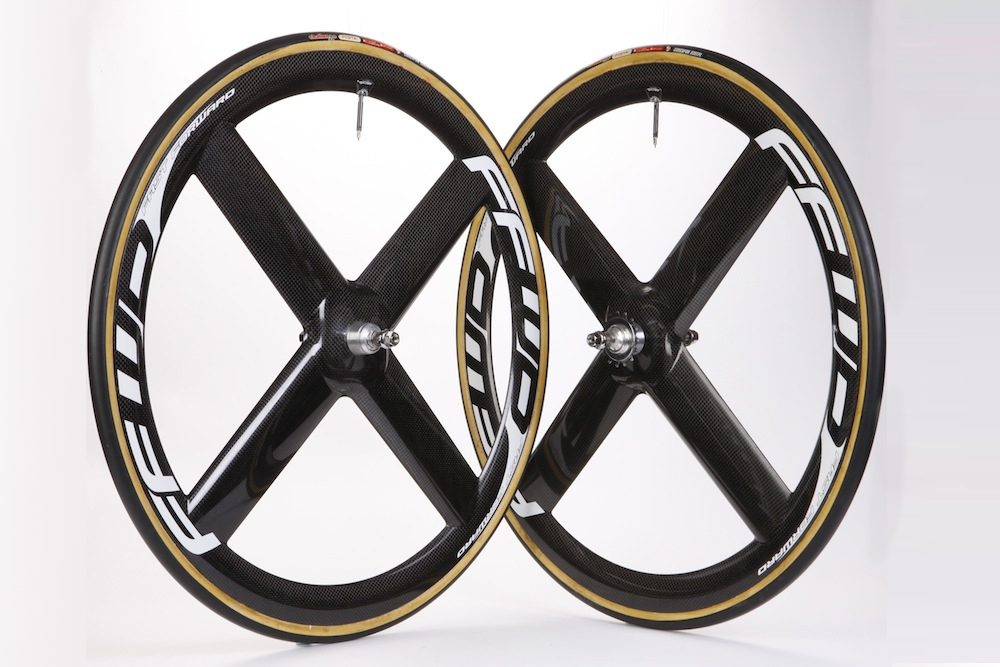
Fast Forward 4 spoke tubulars
Track wheels do not feature a free hub and are fixed gear. This means that as the wheel turns, the pedals always turn too. Track bikes do not have brakes, so again there is no braking surface on the wheels and the hubs don't feature a quick release mechanism, instead they are bolted in. Track wheels can be tubular or clincher.
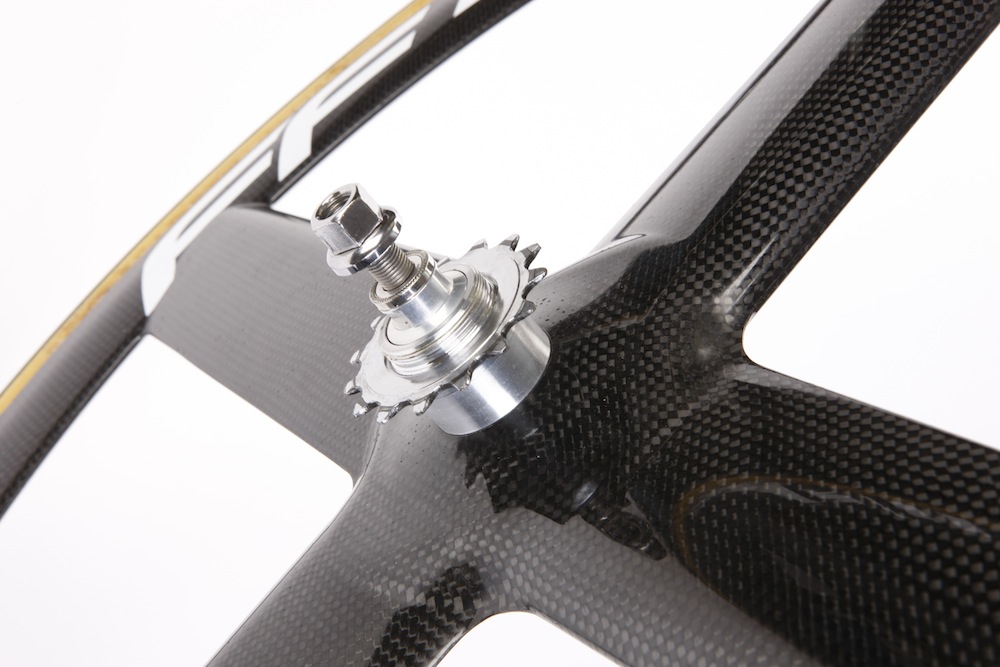
The rear sprocket and hub are fixed. No free hub.
In Summary...
We would recommend that you buy the best wheels available to your budget and style of riding. Bikes often come with wheels that are below par, when compared to the frame and groupset, so an upgrade can often make a huge difference to your performance and enjoyment. Aero wheels with a deep section look 'pro' but can often be heavier and less easy to handle in high winds.
Light wheels offer superior acceleration and climbing, so if you enjoy hills or live in a hilly area, they may be a wise option. Also factor in that to get the maximum aero benefit from deep section wheels you need to be consistently travelling at speeds over 32kph. If you are concerned about weight limits and stiffness, a very good option is a custom built wheel, with a higher spoke count.
The latest race content, interviews, features, reviews and expert buying guides, direct to your inbox!
Oliver Bridgewood - no, Doctor Oliver Bridgewood - is a PhD Chemist who discovered a love of cycling. He enjoys racing time trials, hill climbs, road races and criteriums. During his time at Cycling Weekly, he worked predominantly within the tech team, also utilising his science background to produce insightful fitness articles, before moving to an entirely video-focused role heading up the Cycling Weekly YouTube channel, where his feature-length documentary 'Project 49' was his crowning glory.